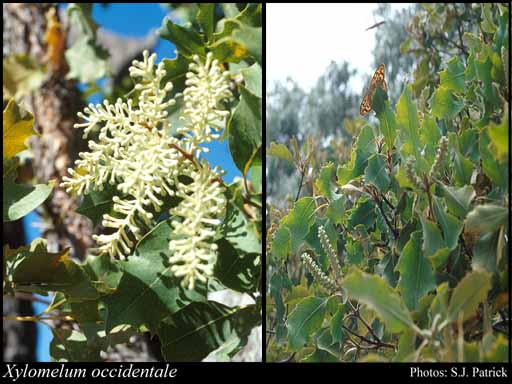- Reference
- Prodr. Suppl. 31 (1830)
- Conservation Code
- Not threatened
- Naturalised Status
- Native to Western Australia
- Name Status
- Current
Tree or shrub, 2-8 m high, with epicormic buds. Fl. cream-white, Dec or Jan to Feb. White or grey sand.

Scientific Description
Trees, 2-8 m high; branchlets hairy, with straight hairs, ribbed. Leaves alternate, 60-115 mm long, 30-85 mm wide, hairy or glabrous, the hairs straight; lamina flat, clearly widest above the middle, once divided, entire or shallowly divided, teeth distinctly pointing towards the apex, the margins flat, with 4-6 points or lobes. Inflorescences not viscid, white or cream, glabrous. Perianth 11-15 mm long; tepals all free after flower opens, hairy, simple-hairy, the hairs spreading, the limb apex hairy all over; ovary hairy, sessile; pistil 10-15 mm long, style hairy. Follicles glabrous, not viscid, dehiscent, 70-90 mm long. Flowers in January, February or December. Occurs in the South-west (SW) Botanical Province(s), in the Swan Coastal Plain (SWA), Jarrah Forest (JF) or Warren (WAR) IBRA subregion(s).
Distribution
- IBRA Regions
- Jarrah Forest, Swan Coastal Plain, Warren.
- IBRA Subregions
- Northern Jarrah Forest, Perth, Southern Jarrah Forest, Warren.
- Local Government Areas (LGAs)
- Armadale, Augusta Margaret River, Boddington, Bunbury, Busselton, Canning, Capel, Cockburn, Collie, Donnybrook-Balingup, Harvey, Kalamunda, Kwinana, Melville, Murray, Nannup, Serpentine-Jarrahdale, Wanneroo.